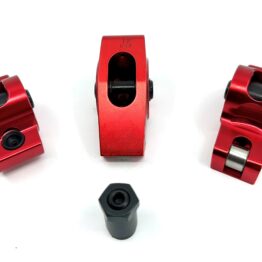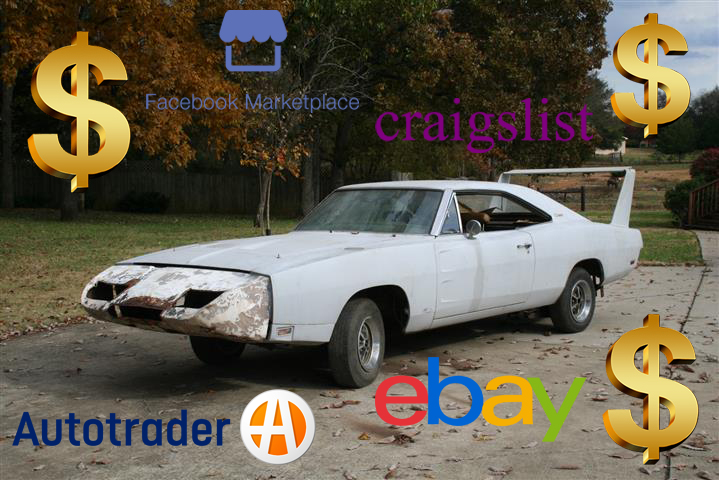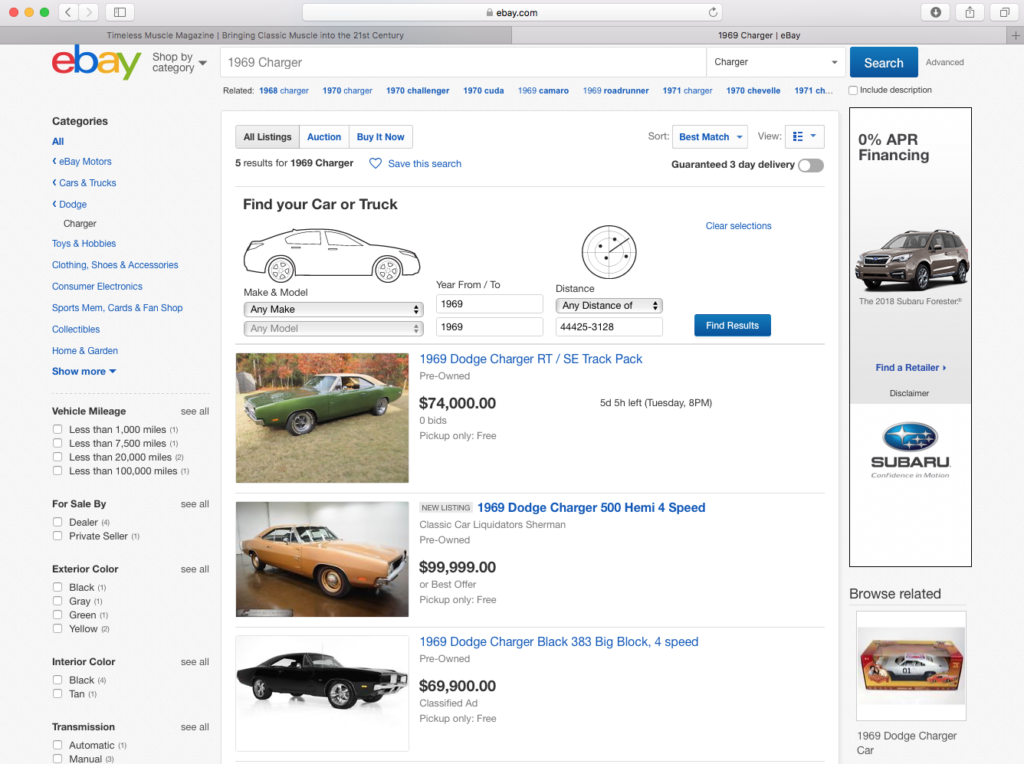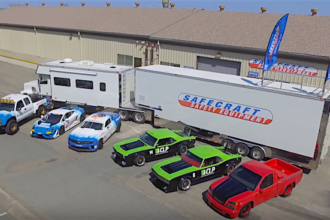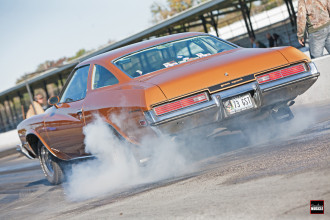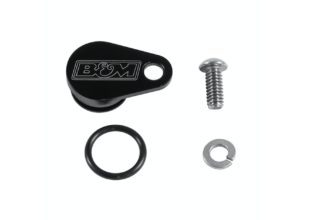Buying and Selling Online Shouldn’t be This Complicated, Right?
With tax time and Spring just around the corner, there are many of us who are out there looking for the latest project car or for good deals on secondhand performance parts. It’s a time-honored tradition here in the States, and in most parts of the developed world.
In the old days, you picked up an Auto Trader, a classified ads publication or even your local newspaper for projects and even used engines, parts or whatever you needed for your current project. Later, websites like eBay and Craigslist came along and revolutionized how you purchased cars and parts, and now, even Facebook has launched Marketplace to buy/sell/trade items. It broadened and eased your search for that “gotta-have-it” part or project from coast to coast.
On the flip-side, we’re now seeing a new generation of buyer, or alleged buyer, come along in recent years that clearly didn’t operate in the previous century. These are largely composed of Millennials who are so heavily vested in themselves and Candy Crush, that they couldn’t be bothered to actually turn up to inspect a vehicle, or whatever it is that you’re trying to sell.
They used to be referred to as tire kickers or strokers, but that would be too kind in some cases. At least those individuals of days bygone would show up to waste your time. The modern equivalents just want to drag out a texted conversation or an email exchange like they were chit-chatting with an old pen pal from childhood, only to hit you with some low-ball offer that’s usually less than half of your asking price — sight unseen!
It can get irritating, but below I’ve listed some tips for both buyers and sellers to use when it comes with dealing with the general public in the modern, digital realm. Think of it as a quick guide to help you buy or sell your needed, or unwanted items in the 21st century.
The Dos:
1.) Research — Research, research, research. I can’t stress that enough. Whether you’e buying or selling, you have to do your due diligence to find out what the value of the item is, and/or the going rate of said item. I say that because sometimes, sometimes, the book value isn’t the norm of what the open market is willing to pay. You don’t want to pay too much because you’re eager, or sell for too little because you’re desperate.
If the value of the car you’re selling in its particular condition is $5000.00, say, then you should list it for as much, if not, slightly more. This allows you some wiggle room off the top if you’re flexible on the price. Always start “high” and then negotiate from there, and never sell for less than what you’re fully comfortable with. You’ll only regret it later.
If you’re the buyer, research what the car typically sells for (eBay even has a feature that allows you check recent selling prices of similar cars or items). The buyer has to also consider want and need. If a car is valued at $5000 and the seller is asking $5500, feel free to negotiate, but don’t lowball him at $2800 because you’ll probably just insult the person and shut down the line of communication.
For both the buyer and seller, you also have to consider the vehicle or part that you’re selling. Sticking with cars, let’s say you have a 1969 Camaro SS396 convertible. It’s a one-owner, bone-stock, pristine survivor and it still looks just as nice as it did the day it left the showroom. No dents, dings, rust or mechanical issues. Oh, and it only has 54,000 miles on the clock.
Clearly it would be worth more than a lesser example is lesser condition, and its price should, would and does, reflect that in the open market. Just because your buddy Dave bought or sold a rough and ragged ’69 Camaro 307 with 280,000 miles and a cracked windshield for $8000, doesn’t make it a blanket value for all 1969 Camaros, nor does it fair well as a bargaining chip if you’re a buyer.
2.) Presentability — Whether it’s a car, a NOS (new old stock) Shaker hood or a used aftermarket exhaust, the lot has to be presentable. If you’re trying to sell your old car, make sure that the car presents well. Even if it’s a rough-around-the-edges project or driver, this still applies. Wash it, wax it, scrub the wheels and tires, clean out the inside, vacuum the carpet, polish up the trim — get busy! Pull it out of the weeds, move it out from behind the pile of crushed beer cans and broken lawn mowers.
It needs to present well if you want to get the max amount of capital from your sell. Nobody wants to see your old Taco Bell wrappers, empty Pepsi cans and the mountain of old cigarette butts in the ashtray. You should steam the engine bay, tie any hanging or loose wires, replace the dead battery and fix the burned out parking light. A running/driving car will always bring more than one that hasn’t turned over in three years.
Essentially make it so it’ll look the part of a well-maintained and cared-for vehicle. A Magic Tree air freshener is only a buck, so if your car stinks inside, pony up the dollar for one. If it’s a part you’re trying to sell, dust off the box it’s in, make sure the part is clean and all components and install instructions are there and accounted for (if possible).
3.) High-Quality Images — This is absolutely imperative. Whether you’re posting on Craigslist, eBay or even Facebook Marketplace, you need to take decent photos of whatever it is you’re selling. Unlike the old days of printed classifieds, you’re no longer limited to one single image of your item.
So if you are selling a car, be sure that you’ve already cleaned it, and use quality photos — and plenty of them! I’m talking front, rear, sides, interior, engine and anything interesting/unusual about your car that potential buyers would want to know. Don’t “chop of” the edges of the car in the picture, either, and be sure to shoot in HORIZONTAL frames.
GM EFI Magazine wrote a guide on this a few years back, and it still holds water today.
The same is true for an intake manifold, headers or the slightly used set of racing seats you pulled out of your old race car. Show multiple angles to help eliminate any need for concern from potential buyers.
4.) Provide as Much Information as Possible — I can’t count how many times I’ve seen a car for sale on Facebook, with only one image and a four word description of the car entirely:
“For Sale: Camaro. $12k invested. Sick. $8,000”
Year? Mileage? What all is done to it? Pics of the engine? The interior? Heck, the front of the car? Is it a real Z-28 or a clone? Is that the original engine? Which transmission? Etc., etc.
The idea is, when you’re trying to sell a car… is to sell the dang car! Nobody wants to sift through 632 comments on your Facebook post to get all of their questions answered. They just don’t. They’d rather have most of the obvious information in front of them before they waste both your time and their time asking redundant questions for things you should have established in your ad.
The Don’ts:
1.) Negotiation Without Representation — There’s nothing more that I despise, than someone who tries to haggle with you over the phone or though messaging without at least coming to see whatever it is that you’re selling first.
“Yeah, I see you’re asking $5,000 for the car, will you take $2,800 today? Cash in hand!” Or the classic, “What’s your bottom dollar,  bro?” Yes, rather than negotiate for the highest amount, I’ll just go ahead and low-ball myself right out of the gate over the phone, just for you, just so you can try to haggle me further down from my asking price when and if you ever actually show up… Honestly, after the last guy tried to pull that on me, I’ve ignored those messages. Or I’ve trolled them back, if I have the time, which I rarely do.
bro?” Yes, rather than negotiate for the highest amount, I’ll just go ahead and low-ball myself right out of the gate over the phone, just for you, just so you can try to haggle me further down from my asking price when and if you ever actually show up… Honestly, after the last guy tried to pull that on me, I’ve ignored those messages. Or I’ve trolled them back, if I have the time, which I rarely do.
Stand your ground, and tell the lazy would-be bidder that you’re asking what you’re asking because that’s what it’s worth. If you’re willing to negotiate, tell him you would but only if they decide to show up. “We can discuss it at the time” or “come check it out if you’re serious, then we’ll talk” usually works.
If you’re the buyer and show up with the full asking amount, seem cool to the seller and aren’t insulting with your negotiating pricing, you more than likely will end up with a deal, regardless. Probably not for your intended ignorant, broke @$$ offer, but something very fair for both parties.
2.) Show Up With Less than Asking Price — This ties in with Number One of the Don’ts. We get it, you’re the potential buyer looking for the best deal. But if someone is asking $5,000, don’t show up wth only $2,800 thinking you’ll get a deal if you flash the cash. Nine-point-nine times out of ten, it won’t work. Not unless the seller is extremely desperate for money, on drugs or the item is stolen. Negotiate your little heart out, but be prepared to pay the full amount, just in case. Who knows, the item may actually be worth much more than asking price and you may end up with a deal, anyway!
3.) Be a Tire Kicker/Stroker — We’ve all been there, you’re driving home from work and you’ve passed by that dilapidated old Camaro every day for almost a year now. It hasn’t moved since the first time you’ve spotted it, the weeds are growing around the wheels and you feel that it deserves far better, so you stop. You don’t have the funds on your person and may not even have the money to buy it entirely, but curiosity has gotten the best of you. It happens. You never know when you might stumble upon the little old lady willing to sell it to you for “whatever you have in your pocket.”
But don’t be that guy that scours through ads, searching for cars and make arrangements with a seller with no intentions to buy — mostly because you don’t have anywhere near the asking amount. We don’t care if you’re a big ’69 Charger fan boy who “just wants to go look at it.” Don’t waste your time, and more importantly, don’t waste the seller’s time. This is also a definite no-no for classic car dealerships.
Yeah, the prices can be inflated and the salesman is there just to make a buck. However, he’s paid solely on commission, and in the time that you’ve wasted of his joyriding in that freshly restored Shelby GT500, he could have been selling it to an actual buyer. We all have bills to pay — so don’t be that guy.
If you have that much extra time on your hands, put in the overtime at work, sell off some of your own old junk or get a second gig somewhere else. That way, you can actually be a buyer next time.
4.) Be a Douche — This goes for both parties, the buyer and the seller.
If you’re the seller, be kind, courteous and provide as much information about the car as possible. Just because you own the raddest car on your block, doesn’t mean you automatically get a Big Ego Pass from everyone on the Internet. Truthfully, most people don’t care anyway. Respond to questions honestly, and in a timely manner if through email or text. Who wants to buy a car from someone who acts like a jerk?
If you’re the buyer, be respectful, ask the right questions and treat the car (or whatever it is) better than if it were your own. Don’t go slamming the doors, pointlessly beating on the car during the test drive or endlessly insult the car’s owner about this or that. If you’re still interested after careful examination, make an offer that you feel is fair. If not, politely tell the seller that you’ll have to sleep on it.
No harm, no foul.
I hope this helps some of you out. Good luck!

Rick Seitz is the owner and founder of AutoCentric Media, the parent company to Timeless Muscle Magazine, and has a true love and passion for all vehicles. When he isn’t tuning, testing, or competing with the magazine’s current crop of project vehicles, he’s busy tinkering and planning the next round modifications for his own cars.






